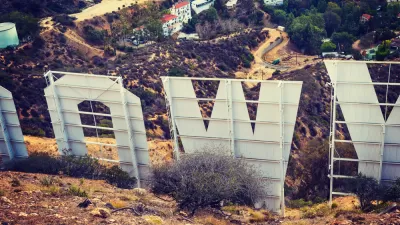The controversy over the recent ballot initiative known as Measure S has Los Angeles thinking: How can the city accommodate new housing supply without disenfranchising communities?

At a recent USC Price School panel, planners, developers, and advocates discussed how Los Angeles could plan for both more housing supply and improved neighborhood equity in the aftermath of the failed Neighborhood Integrity Initiative, which helped to ignite a citywide conversation about planning and growth.
Although the city recently committed to updating community plans on a six-year cycle, former Director of City Planning Gail Goldberg maintained that the community planning effort would be hindered by the lack of a cohesive, inspiring general plan—resulting in every community coming up with its own vision, and more opposition to new development.
"I would propose that if communities have no idea where things are going, or what the ultimate result is supposed to be, it's not an illogical response to oppose new projects," she argued. Moreover, a lack of transparency and accountability leaves them apparently without recourse: "If they worked and adopted a plan that they loved, would the council honor it?"
South L.A. community organizer Damien Goodmon added that the regional and local housing crises can be situated in the context of a global interest in speculative real estate that especially impacts underserved communities. "We're not building housing for people to live in; we're building housing for investment," he said.
Before we discuss whether we need more housing and where to put it, let’s talk about protecting our existing communities. Ultimately, that forces us to talk about the challenge of gentrification—the spatial expression of economic inequality.
Goldberg, too, stressed the need for a holistic approach to planning in her call for "a new way of doing community plans."
Community plans have to be about more than just growth. They are not only about where development goes and where it doesn’t go. Community plans have to talk about the quality of life in that community, and how we make sure that along with housing come all of the other things that we all need—the jobs, the infrastructure, and the amenities that make neighborhoods great.
FULL STORY: Stewarding a Post-'Measure S' LA: Will City Leaders Truly Engage?

Alabama: Trump Terminates Settlements for Black Communities Harmed By Raw Sewage
Trump deemed the landmark civil rights agreement “illegal DEI and environmental justice policy.”

Planetizen Federal Action Tracker
A weekly monitor of how Trump’s orders and actions are impacting planners and planning in America.

The 120 Year Old Tiny Home Villages That Sheltered San Francisco’s Earthquake Refugees
More than a century ago, San Francisco mobilized to house thousands of residents displaced by the 1906 earthquake. Could their strategy offer a model for the present?

Ken Jennings Launches Transit Web Series
The Jeopardy champ wants you to ride public transit.

BLM To Rescind Public Lands Rule
The change will downgrade conservation, once again putting federal land at risk for mining and other extractive uses.

Indy Neighborhood Group Builds Temporary Multi-Use Path
Community members, aided in part by funding from the city, repurposed a vehicle lane to create a protected bike and pedestrian path for the summer season.
Urban Design for Planners 1: Software Tools
This six-course series explores essential urban design concepts using open source software and equips planners with the tools they need to participate fully in the urban design process.
Planning for Universal Design
Learn the tools for implementing Universal Design in planning regulations.
Clanton & Associates, Inc.
Jessamine County Fiscal Court
Institute for Housing and Urban Development Studies (IHS)
City of Grandview
Harvard GSD Executive Education
Toledo-Lucas County Plan Commissions
Salt Lake City
NYU Wagner Graduate School of Public Service





























